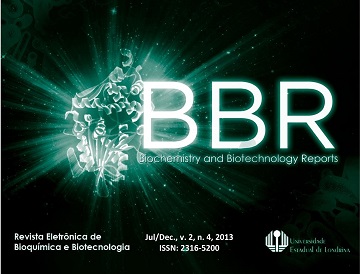Hyaluronic acid: characteristics, microbial production and industrial applications
DOI:
https://doi.org/10.5433/2316-5200.2013v2n4p42Keywords:
Hyaluronic acid, Streptococcus zooepidemicus, fermentation, industrial applicationsAbstract
Hyaluronic acid (HA) is a high molecular mass polysaccharide formed from disaccharide units containing D-glucuronic acid and N-acetylglucosamine. The microbial production is replacing the HA from animal tissues, and the literature has focused on increasing the yield and molecular weight of this biopolymer. Due to its hydrophilic and viscoelastic properties, HA has been extensively used in viscosupplementation of synovial fluid of patients with arthritis, tissue repair, ophthalmological surgery, and drug delivery. Likewise, HA constitutes an essential component in a wide variety of cosmetics. In this review, we present some structural properties, nutritional and physical factors of production by Streptococcus zooepidemicus and some industrial applications of this attractive biopolymer.

